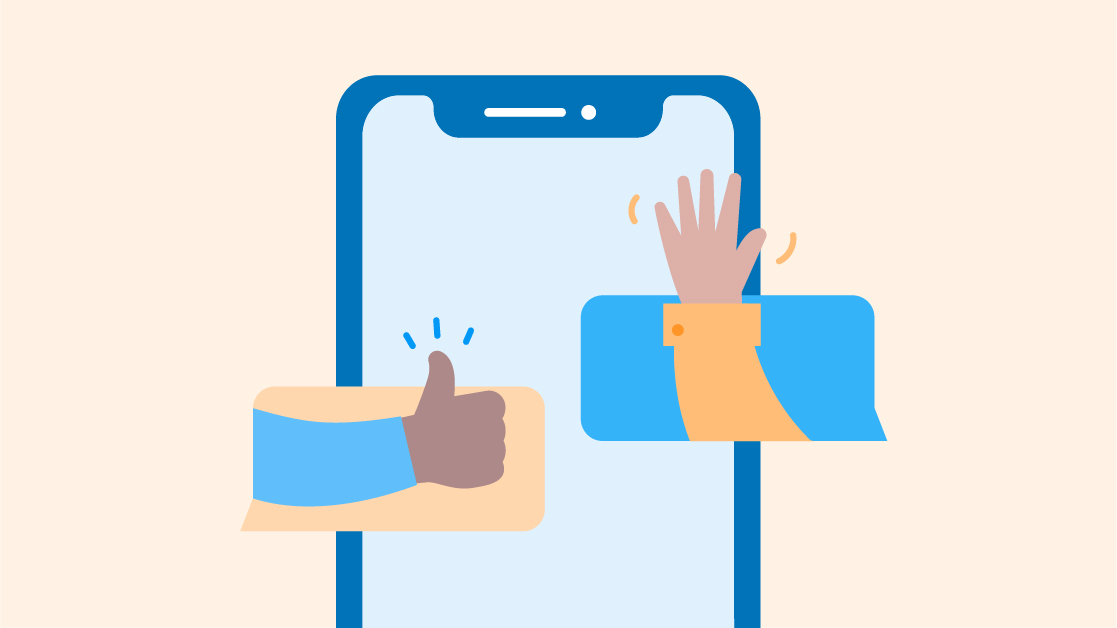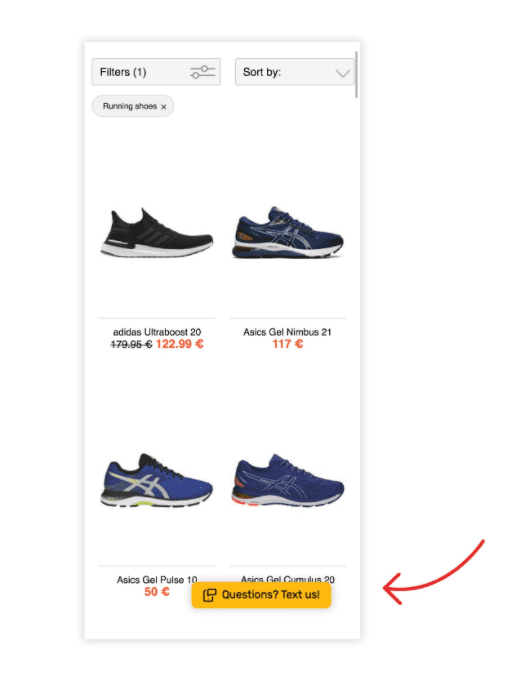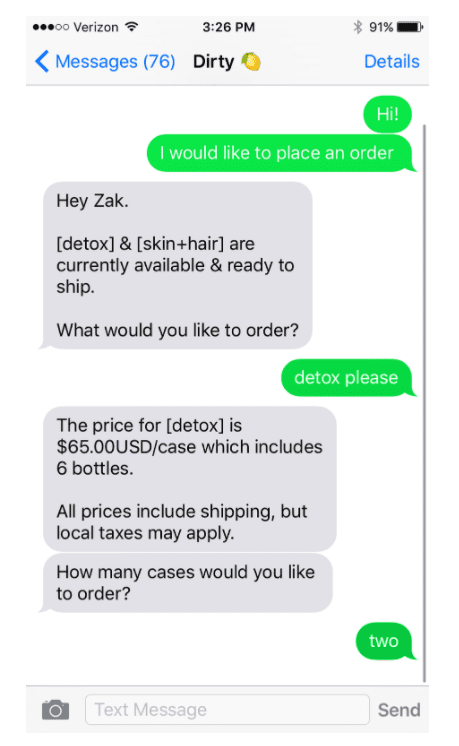Conversational Commerce Is Changing Your Customer’s Expectations
The emergence of conversational commerce represents the next big opportunity for brands and retailers to capture and engage with their audience.

The emergence of conversational commerce represents the next big opportunity for brands and retailers to capture and engage with their audience.

Imagine you’re shopping for a new pair of running shoes on your phone.
You’re browsing through different brands when you see a small button asking if you have any questions.

You click on the button, and it opens your native text messaging app with a phone number prefilled.
You type up your question and click send. You’re pleasantly surprised by the quick response and helpful suggestion.
You open the link, read a few product reviews, and decide to make a purchase.
Not only did you buy a new pair of shoes, but you also experienced conversational commerce.
About five years ago, Chris Messina of Uber coined the phrase “conversational commerce” in a Medium post.
He described it as “delivering convenience, personalization, and decision support while people are on the go, with only partial attention to spare.”
It’s a good starting point, but it only explains the outcome. How do you deliver a conversational experience?
Conversational commerce is personalizing your brand experience with more messaging and chat apps for higher customer engagement.
That means allowing customers to ask questions, get personalized recommendations, read reviews, and even click to purchase from messaging platforms.
You support these interactions with human agents, chatbots, or a mix of both.
Conversational commerce makes a ton of sense, and its growth in popularity led various outlets to take turns predicting its dominance.
In 2016, The Observer dubbed it the year of conversational commerce. Then Forbes made the same prediction again three years later in 2019.
At the same time, conversational commerce is still not mainstream. That’s why we’re reluctant to make grand pronouncements.
Similar innovations tend to happen gradually over time.
Still, it’s clear to both consumers and marketers that “a change is gonna come.”
Adopters of conversational commerce see impressive returns, and more and more e-commerce websites are incorporating it into their strategy. Here’s why.
The ‘retail apocalypse’ hasn’t happened for a simple reason: shoppers value being able to see and touch an item before purchasing it.
Why else would primarily online retailers like Warby Parker, Casper, and Untuckit open hundreds of stores across the U.S.?
When someone buys running shoes online, they can’t try them on. They can’t see if they fit or how they look.
Instead, they take a mini leap of faith and hope that your return policy will catch them if they fall.
It explains why multiple studies show that insufficient product details disappoint online shoppers and prevent them from checking out.
That’s where conversational commerce comes into play. You’re giving your customers a voice. They can ask you for product recommendations, find their size, and compare options in real time.
It humanizes your brand and also helps overcome roadblocks to purchasing by shortening the distance between prospect and you.
Here’s an example of one DTC brand’s conversational experience: “Burrow House from home.”
The DTC furniture brand lets you book a 15- or 30-minute appointment with one of the company’s trained, full-time design experts.

Over a phone call or via text, these experts advise you on decor questions like the right seating or rug option, what plant or paint color to add to your space, and place orders.
For some brands, conversational commerce is a cornerstone of their strategy.
Dirty Lemon applies a conversational approach to the entire customer journey, including text to buy.
Once you’ve made your first purchase, the DTC retailer encourages customers to ask customer service-style questions and place future orders.

A lot of the chatter around conversational commerce trends focuses on the method.
Companies with a vested interest make a case for Facebook Messenger, WhatsApp, voice assistants like Google Home, texting, or an AI chatbot with natural language processing skills.
This leads most people to believe that it’s about picking an individual channel.
The reality is that conversational commerce is not a channel-specific trend. It’s about a broader shift in how people buy.
Your customers want the convenience of online shopping with the 1-on-1 experience they get in-store.
So, you need to think about how you can tailor your customer experience to support this, not losing sight of what makes sense for your product.
For example, if you sell children’s jewelry with an average order value (AOV) of $20, and shift thousands of items a week, an AI live chat app could automate responses to typical customer service queries.
Plus, it’s likely your customers don’t expect your team to respond personally.
If you sell road bikes that start at a thousand dollars, making customers feel they are engaging with an individualized service that responds quickly with helpful answers is critical.
So, the personalized feel of 1-on-1 texting is probably a better fit.
You might also apply different channels to your customer support and sales functions.
You could provide an AI-powered chatbot that provides sizing guidance for a subscription clothing service. Once a customer completes an order, you can let them know you offer personalized styling advice to reduce churn.
Not all businesses need to launch a chatbot or virtual assistant. But they can start by even offering a couple of hours a week where customers can ask them questions–as Equal Parts has with their text-a-chef hotline.

The real benefit of conversational commerce is that brands have a direct line to customers. This allows you to create valuable, personalized experiences that build your brand–and bottom line.
Drew Wilkinson is the Head of Marketing at SimpleTexting. Drew has more than a decade of experience managing successful integrated marketing programs to build brands, raise awareness, and generate demand.
More Posts from Drew WilkinsonBlu Moon Design sells high-quality, handmade clothing for girls. Find out how text marketing helps their team keep in touch with customers and increase sales.
ReadAs traditional retailers continue to struggle and e-commerce accelerates, live stream shopping will change how we discover and buy products.
ReadStart a text marketing campaign or have a 1-on-1 conversation today. It's risk free. Sign up for a free 14-day trial today to see SimpleTexting in action.
No credit card required